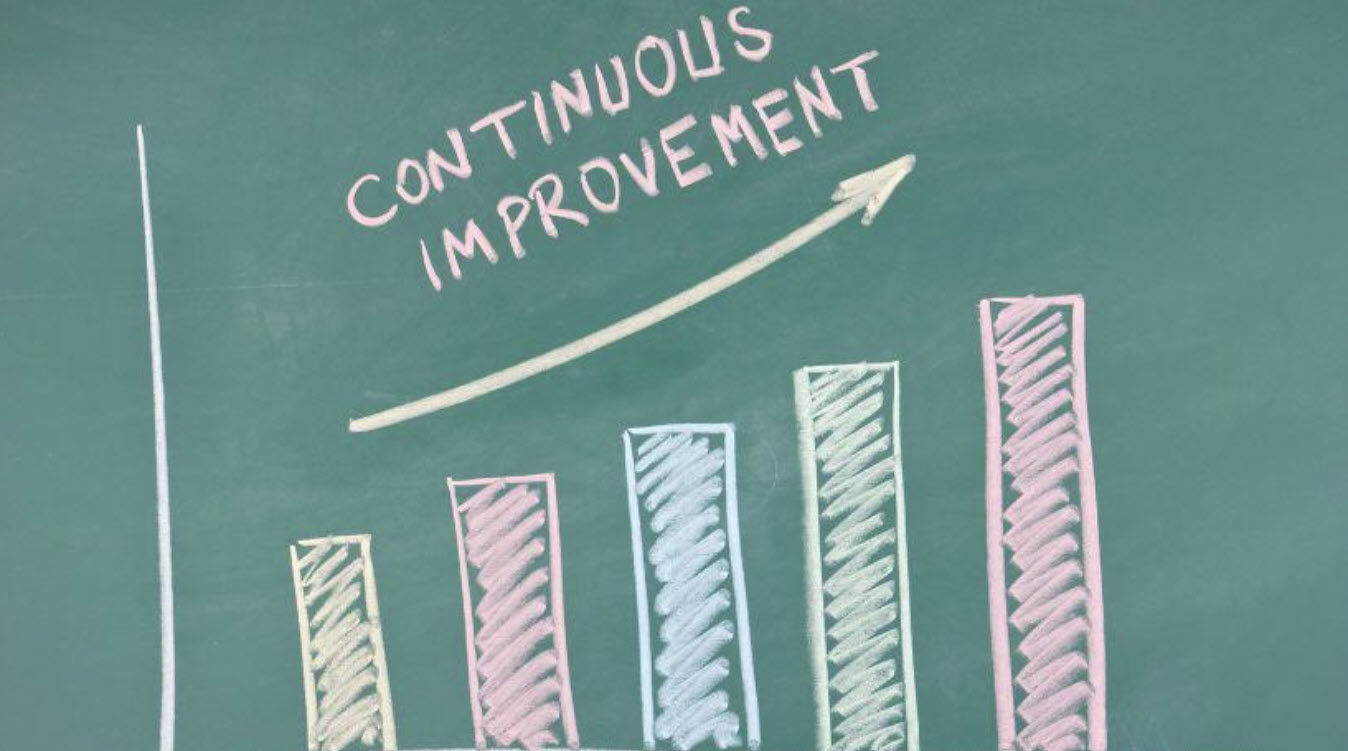Inspire and Sustain a Culture of Continuous Improvement:
Implement These Actions to Engage your Employees and Succeed
Monday, June 3, 2024
 Beware of the phrase, “We’ve always done it this way.” Be an organization that expects excellence, which means your organization expects constant improvement and change.
Beware of the phrase, “We’ve always done it this way.” Be an organization that expects excellence, which means your organization expects constant improvement and change.
What is a culture of continuous improvement?
This refers to an organizational environment where everyone is committed to the relentless pursuit of innovation and excellence. It promotes the idea that there is always room for improvement. It’s an organization whose stakeholders ask, “How can we do this better? How can I do my job better? How can I better support my team?”That sounds like a tall order, but when your organization, senior leaders, and all stakeholders embrace a culture of continuous improvement, your organization will thrive.
What are the benefits of a culture of continuous improvement?
*Increased efficiency in processes*Cost reduction
*Improved quality: Improve your products and services.
*Increase in employee engagement: See below
*Adaptability: Agile organization structures reduce risk and increase resilience.
How to build a culture of continuous improvement:
This takes time, resources, and buy-in from everyone, from senior leaders down to frontline workers. A culture of continuous improvement is one in which mistakes are seen as opportunities; where people are encouraged to push their limits; and where employees can challenge the status quo, question processes, and suggest improvements.This doesn’t mean employees get a free pass to make changes! That would be mayhem. Instead, there must be a structure and strategy to build and sustain a culture of continuous improvement.
Here’s how:
- Lead by Example: Demonstrate commitment to improvement through actions and decisions from top leadership down to all levels. Leaders need to walk the talk.
- Encourage Feedback: Create channels for strategic communication and feedback loops to gather ideas and insights from employees. Get rid of information silos. Start with an employee engagement survey to understand your employees’ perceptions about the organization and management.
- Provide Resources: Allocate resources such as time, budget, and tools to support improvement initiatives. This could include training and development, skill-building programs, mentorships and returnships, continued education opportunities, and more. Invest in updated technology and safety equipment. Listen to your frontline workers when they tell you what they need.
- Recognize and Reward: Acknowledge and celebrate achievements and contributions to continuous improvement efforts.
- Build Collaborative Teams: Foster a collaborative environment where cross-functional teams work together towards common improvement goals. These teams are most successful when they are both task and relationship-oriented. Informal mentoring and coaching must be an integral part of senior leaders’ behavior. Find spaces of belongingness and community.
- Embrace Failure as Learning: Cultivate a growth mindset. Foster a culture where curiosity, learning, and adaptation are valued, and employees are encouraged to challenge the status quo. Encourage experimentation and view failures as opportunities for growth and learning. When you are risk-averse, and when team members don’t feel safe to take chances on or express new ideas, your teams will stagnate, getting stuck in the same-same of yesterday.
- Set Clear Goals and Metrics: Define clear objectives and key performance indicators (KPIs) to measure progress and success. Likewise, define who is responsible for what. This fosters a culture of accountability. Tailor your management involvement depending on each employee's needs.
- Regularly Review Processes: Continuously evaluate and refine existing processes to eliminate inefficiencies and adapt to changing needs.
Employee Engagement in a Culture of Improvement:
Engaged employees are more likely to contribute innovative ideas and actively participate in improvement initiatives. This drives organizational growth.The culture of improvement nurtures a sense of ownership and purpose among employees. This leads to higher job satisfaction, work satisfaction, and retention.
Engaged employees feel valued and empowered. This leads to an increase in productivity and performance.
When employees are given the opportunity to develop their skills and grow, they are more likely to adapt to change and learning. This fuels the culture of improvement.
“Practice the philosophy of continuous improvement. Get a little bit better every single day.” -Brian Tracy
RECENT BLOG POSTS
Tuesday, April 8, 2025
Friday, March 28, 2025
Tuesday, March 4, 2025
Thursday, February 27, 2025
Tuesday, February 18, 2025
Tuesday, February 4, 2025
Tuesday, January 28, 2025
Tuesday, January 21, 2025
